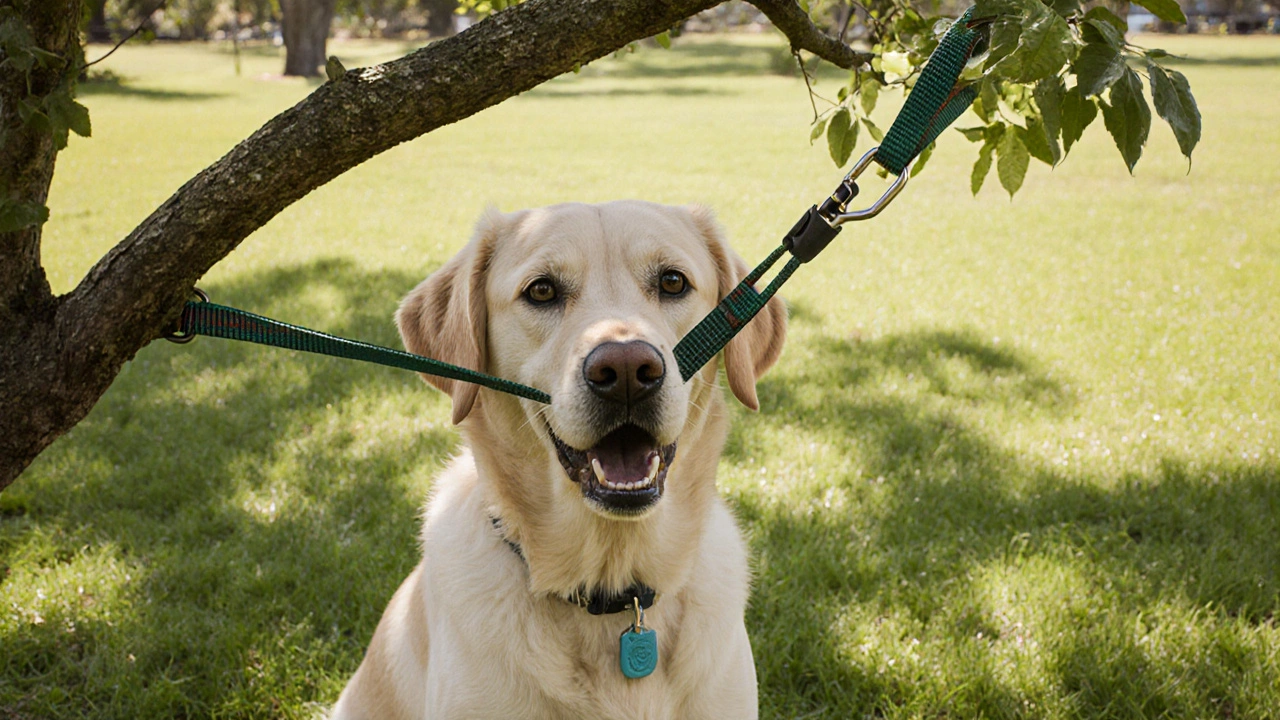Breakaway Collars for Dogs: Safety, Benefits, and What Vets Recommend
When it comes to your dog’s daily gear, a breakaway collar, a safety-focused dog collar designed to release under pressure to prevent choking or strangulation. Also known as quick-release collar, it’s not just a convenience—it’s a lifesaver for curious, active, or escape-prone dogs. Unlike standard collars that stay locked tight, breakaway collars have a special clasp that pops open if your dog gets snagged on a fence, bush, or toy. This simple design stops serious injury before it starts. Many vet-recommended dog harness, a secure alternative to collars that distributes pressure across the chest and shoulders, reducing neck strain options work best alongside breakaway collars, especially for dogs who pull or have respiratory issues.
Why does this matter? Because dogs get into tight spots every day. A collar caught on a branch during a chase, a leash tangled in playground equipment, or even a puppy slipping through a crate bar—these aren’t rare accidents. A 2022 study from the UK Veterinary Medical Association found that over 1 in 5 emergency vet visits for small dogs involved collar-related trauma, and nearly all could’ve been prevented with a breakaway design. That’s why many shelters now require them for adopted dogs, and why dog walking safety, the practice of choosing gear that minimizes risk during walks and outdoor activities is no longer just about control—it’s about protection. You wouldn’t skip a seatbelt in a car, so why risk your dog’s neck with a collar that won’t let go? Breakaway collars don’t mean less control. They mean smarter control. Many still have ID tag rings, some even include reflective strips for night walks, and they come in sizes for teacup pups to medium breeds.
Still, not all breakaway collars are created equal. The best ones use durable plastic buckles that snap cleanly under 5–10 pounds of pressure—enough to free your dog but strong enough to hold during normal walking. Avoid cheap nylon ones with flimsy clips—they might fail too easily or not at all. And remember: if your dog wears a collar all day, especially indoors or around other pets, a breakaway design is non-negotiable. Even the calmest dog can panic if caught. Below, you’ll find real advice from pet owners and vets on choosing the right fit, when to switch from collar to harness, and how to spot signs your dog’s current gear might be doing more harm than good.
Are Breakaway Collars Necessary for Dogs? Here's What Pet Owners in New Zealand Need to Know
Breakaway collars can save your dog's life if they get caught on something. Learn when they're necessary, how to choose the right one, and why they're not just for small dogs.
